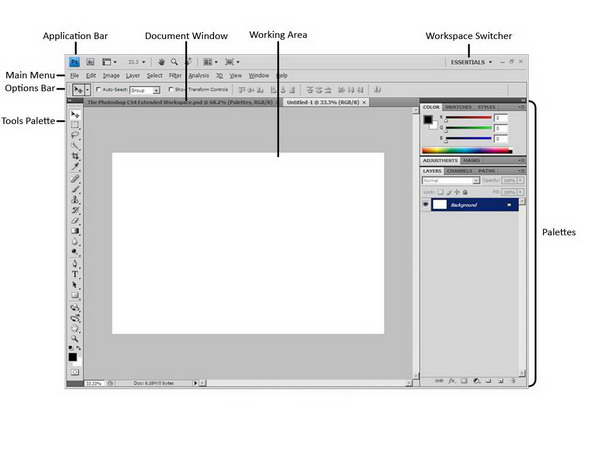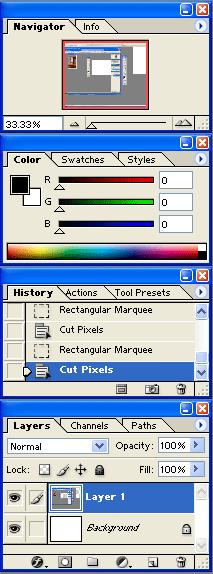Environment of the Adobe Photosop

Main Menu/ Menu bar

The menu bar consists of nine menus: File, Edit, Image, Layer, Select, Filter, View, Window, and Help. Take a few moments now to look at each of the menus. You may notice that some menu commands are followed by ellipses (...). This indicates a command that is followed by a dialog box where you can enter additional settings. Some menu commands are followed by a right pointing arrow. This indicates a submenu of related commands. As you explore each menu, be sure to take a look at the submenus as well. You'll also notice that many commands are followed by keyboard shortcuts. Gradually, you'll want to get to know these keyboard shortcuts as they can be incredible time savers.
As we make our way through this course, we'll be learning the most useful keyboard shortcuts as we go along.
In addition to the menu bar, Photoshop often has context sensitive menus for accessing some of the most likely commands depending on which tool is selected and where you click. You access the context sensitive menu by right clicking in Windows, or pressing the Control key on a Macintosh.
One of the most convenient contextual menus can be accessed by right clicking/Control clicking on the title bar of a document for quick access to the duplicate command, image and canvas size dialogs, file information, and page setup. If you already know how to open an image, go ahead and try it now. Otherwise, you'll learn how in the next section.
Option bar
The options bar, which is located directly underneath the menus, is a useful tool when working with the different Photoshop tools. As you can see right now, when the selection tool is in use, the options bar reflects the changes that can be made to how that specific tool operates. Here, you have selection options, and style options, which includes the ability to make the selection tool a specific size in pixels. When you switch tools, to the paintbrush tool for instance, these options change. When a tool in Photoshop isn't behaving as you expect it to, the options bar should be the first place you look to fix it.

Panes
Panes are also important features of the Photoshop interface. All sorts of information is displayed in these panes, and therefore they can get a little confusing. They display location information, tool options, and history, among other things. If you ever lose track of a specific pane (they tend to stack up), go to the windows menu and select that pane to view it. I�ll talk more about the specific panes later on in the tutorial.

Tool Bar
Perhaps the most important element of the Photoshop interface is the toolbar. It contains a bunch of icons that represent the different tools Photoshop offers to alter and create images. These include tools for selecting specific areas of images, changing the colors of the image, stretching, transforming, and erasing parts of an image, and many more. To get an idea of what some of these tools can do, mouse over the icons and you�ll get an explanatory tool tip. I�ll explain some specific tools in the following sections of this tutorial.





